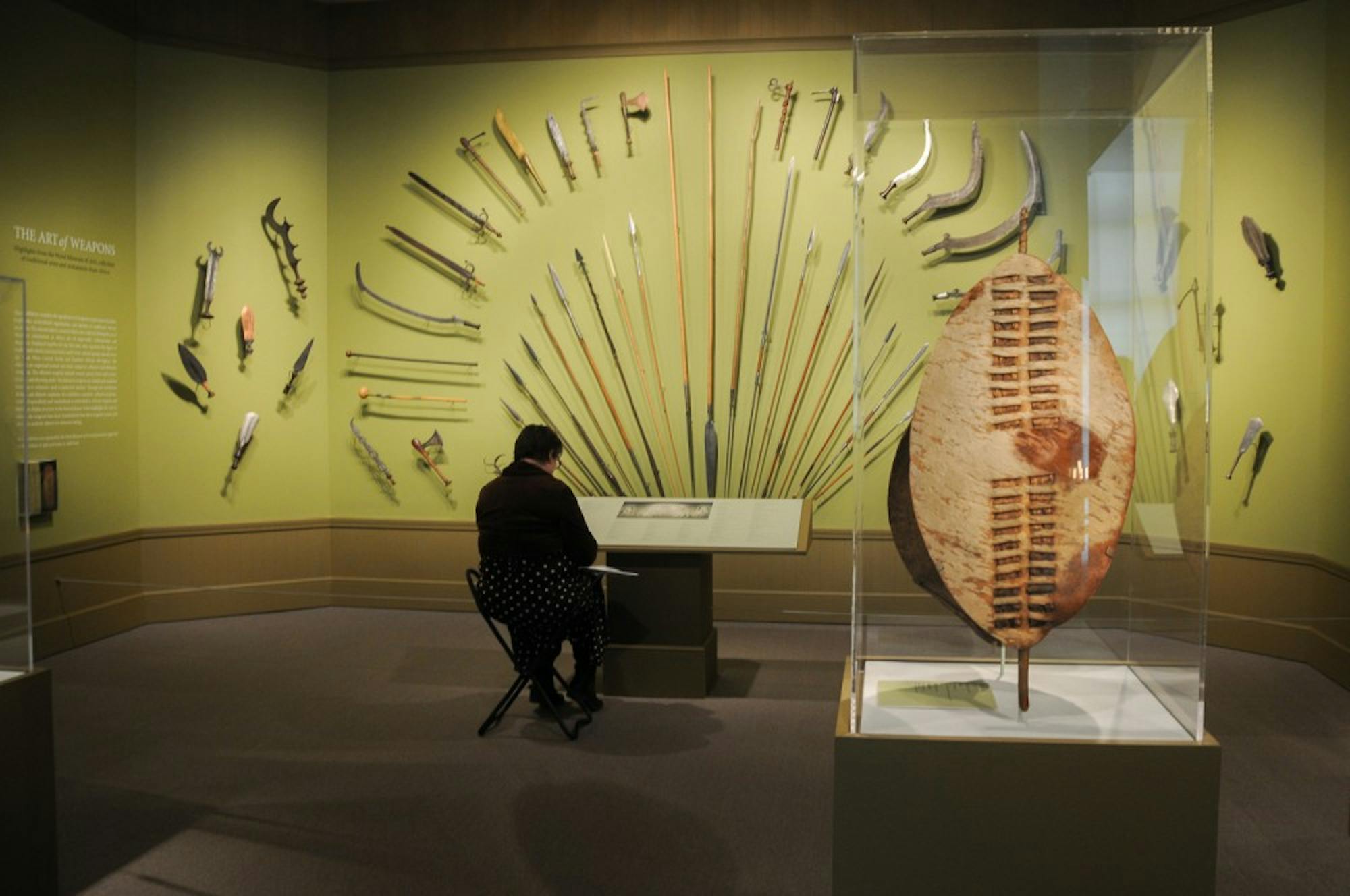Displayed in the shape of a rising sun on the wall, the African weapons in the new Hood Museum of Art exhibit, “Art of Weapons,” form intimidating yet beautiful rays. Meant to mimic the grand Victorian style common to elite homes and museums, the exhibit explores themes that include colonialism and gender binaries.
Evoking the Victorian era and the associations it connotes, curator of African art Ugochukwu-Smooth Nzewi said, is key to the exhibit, because one of the major themes of the display is the perception of African masculinity from the point of view of Western collectors.
The majority of the weapons are from the Hood’s collections. In 1885, Rev. Josiah Tyler, son of Dartmouth’s fifth president, Rev. Bennet Tyler, donated several Zulu weapons collected in Natal, South Africa, where he was a missionary from 1849 to 1889. From there, the Hood expanded its collection through various acquisitions and donations.
The objects, Nzewi said, were mostly collected by Western males, missionaries, colonial officers, military officers and big game hunters. These different groups compiled their collections at the height of colonialism and ethnographic anthropology.
The exhibit raises questions about the pieces’ history, Hood coordinator of academic programming Amelia Kahl said.
“Who was collecting these weapons? How come from this time period we have a huge collection of weapons here at Dartmouth and as significant a collection of beautiful African textiles?” Kahl said. “Who was buying these things? Who was attending the College, and who was giving them to us?”
The exhibition underscores that the weapons reflect social constructions of masculinity and explores how they present Western impressions of African masculinity, Nzewi said.
“All the weapons speak to different ideas,” Nzewi said. “For instance, the exhibit is really thinking of the weapons as objects, and hence the title, ‘Art of Weapons.’”
The exhibit, split into offensive and defensive weapons, displays spears, swords, knives and shields, which date from 1850 to the 1930s. They come from more than 40 ethnic groups, drawn from North, Central, Western, South and East Africa, encompassing a geographical spread that includes Nigeria, the Democratic Republic of the Congo, Mali, Tanzania and the Republic of Sierra Leone.
The weapons were individually crafted by skilled artisans all over the continent, religion and African and African American studies professor Robert Baum said.
“Often times, the skills to create these weapons were thought to be given to the artisans by spiritual powers or ancestors or deities,” Baum said.
On opposing walls are different shields, including a Gombe shield from the Democratic Republic of the Congo and a Shilluk shield from South Sudan. Crafted from materials such as hippopotamus skin and raphe fiber, the shields form intricate geometric patterns while remaining incredibly tough.
The display relates to the personal relationship between the weapon and its user, Baum said.
The exhibit serves as a counterpoint to a 2008 exhibit called “Black Womanhood,” which explored black women’s history, according to Kahl.
“Art of Weapons” opened on April 23 and will stay open through fall 2014. Nzewi is available for tours and classes by request.




